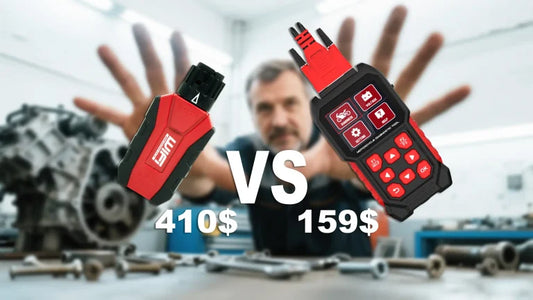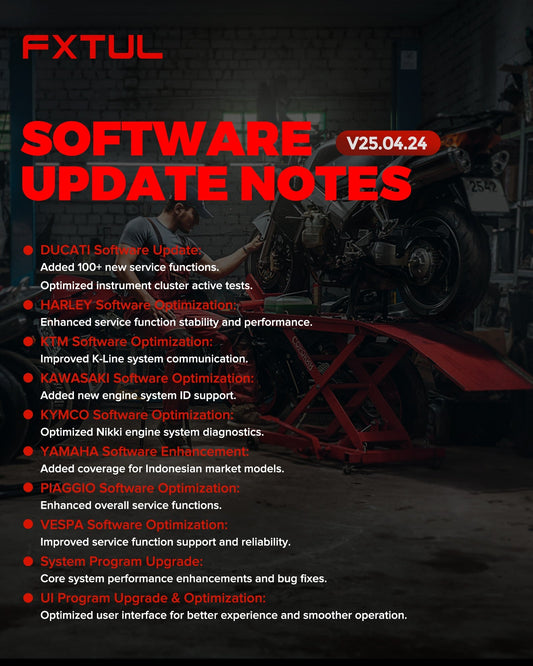The braking system is the most critical safety feature in a vehicle, bar none. Many drivers only realize there's a problem when they hear a screeching metallic grinding sound or feel the brake pedal become spongy—but by then, significant damage may already have been done to the vehicle, or even put themselves in danger.
In reality, most potential brake system issues can be detected early through simple visual inspections. By spending just five minutes each month to check the following three items according to this guide, you can gain full awareness of your vehicle's brake condition and drive with peace of mind.
Brake Fluid Level Check
· When to check: Once a month, or before a long trip.
· How to check:
1. Open the engine compartment and locate the master brake cylinder (usually at the rear on the driver's side).
2. Locate its translucent reservoir, usually marked “BRAKE FLUID” with MIN (minimum) and MAX (maximum) level lines.
3. Without opening the cap, visually confirm the fluid level is between the two lines.
· Results Interpretation & Action:
· Normal: Fluid level is between MAX and MIN.
· Low fluid level (near or below MIN):
· Cause 1: Normal wear. As brake pads wear down, the caliper pistons move outward, requiring more brake fluid to compensate. This causes the reservoir level to gradually decrease—a normal occurrence.
· Cause 2: Leakage! This is a serious issue. Inspect for oil stains around the wheel cylinder, brake lines, and master cylinder. If leakage is detected, DO NOT drive. Immediately tow the vehicle for repair!
· Abnormally high fluid level: This typically occurs after installing new brake pads, as the pistons retract and fluid flows back into the reservoir. If fluid levels are high without pad replacement, it may indicate incorrect fluid type or excessive water contamination.
· Important Notes:
· Never mix brake fluids of different grades (e.g., DOT 3, DOT 4, DOT 5.1). Their differing chemical properties may cause sedimentation and damage the system.
· Brake fluid absorbs moisture over time, corroding components and lowering the boiling point. Inspect and replace brake fluid every 2 years or 40,000 km (whichever comes first).
Brake Pad Inspection
Brake pads are the “soles” that directly rub against the brake rotor to generate braking force.
· When to inspect: At every maintenance interval, or when you notice increased braking distance or hear a “squealing” friction noise.
· How to check:
1. You can directly see the brake pads inside the caliper through the spokes of the wheel hub.
2. Inspect the remaining thickness of the friction material (gray portion) on both sides of the brake pad.
· Results and actions:
· Normal: Friction material thickness > 3 mm (roughly equivalent to the edge thickness of a one-yuan coin).
· Caution Required: Thickness between 2-3 mm. Plan for replacement soon.
· Replace Immediately: Thickness ≤ 2 mm, or if the wear indicator (a small metal plate that emits a sharp metallic squeal when worn down) is continuously sounding an alarm.
· Important Notes:
· Inspect both inner and outer brake pads during checks, as wear may be uneven.
· Front brake pads typically wear faster because the vehicle's weight shifts forward during braking, causing the front wheels to bear most of the braking force.
Brake Disc Inspection
The brake disc is the “working surface” where brake pads make contact.
· When to inspect: Inspect the brake discs simultaneously when checking the brake pads.
· How to inspect:
1. Observe the brake disc through the wheel hub.
2. Pay close attention to the disc's surface condition and edges.
· Results assessment and actions:
· Normal: Smooth surface with uniform wear marks, no deep scratches or grooves.
· Attention/Repair Required:
· Deep grooves: Typically caused by foreign objects embedded in the brake pads or pads wearing down to the metal backing plate, scratching the rotor. Inspect brake pads and either “resurface” (machine flat) or replace as needed.
· Raised “steps” at edges: Normal wear pattern. Feel the transition between disc surface and edge; if step height exceeds 1.5mm, replace brake disc.
· Blue spots (burn marks) on the surface: Indicates the brake disc has overheated, potentially causing hard spots and judder that impair braking performance.
· Cracks present: Absolutely do not continue using! Replace immediately to prevent the risk of fracture.
· Inspect both inner and outer brake pads during checks, as wear may be uneven.
· Front brake pads typically wear faster because the vehicle's weight shifts forward during braking, causing the front wheels to bear most of the braking force.
Create Your Brake Inspection Checklist
Brake Fluid: Check if the fluid level is between MIN and MAX. If the level is too low or the fluid appears cloudy, inspect for leaks and replace regularly.
Brake Pads: Check if the friction material thickness is between 3mm and 2mm. If it exceeds this range or you hear metal grinding, replace immediately.
Brake Rotors: Inspect surface flatness, smoothness of edges, presence of deep grooves, and ensure any steps are <1.5mm.
Final Recommendations:
Visual inspection is the first step, but pedal feel is equally important. If any of the following occur, immediately visit a professional repair shop for a thorough inspection:
· Spongy brake pedal or increased pedal travel (may require bleeding or master cylinder inspection).
· Steering wheel or body vibration during braking (typically caused by warped brake rotors).
· Vehicle pulls to one side during braking (may indicate issues with a caliper or brake pads on one side).
Safety begins with vigilance; accidents stem from complacency. Cultivating the habit of regular brake inspections demonstrates responsibility for both your own life and the lives of others.




